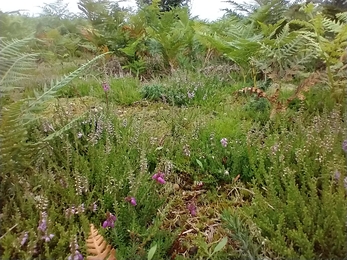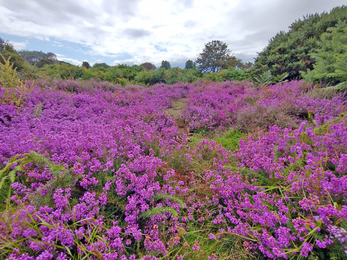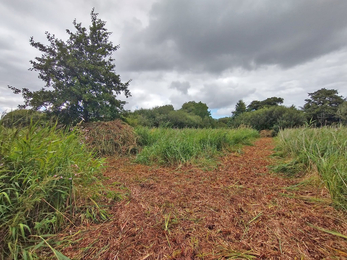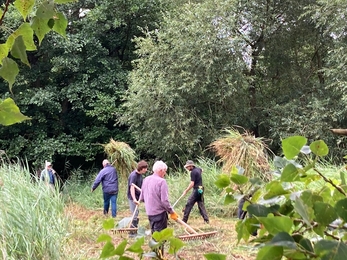Wild news from our reserves – 11 August 2023
Heather at Gunton Warren – Lewis Yates
A recent record of a white admiral butterfly at Lound Lakes takes the total to a brilliant 26 species seen this year. The white admiral is a striking black-and-white butterfly with a delicate flight that includes long glides. It prefers shady woodlands, clearings and rides in late summer. Adults are often found on the flowers of bramble and lay their eggs on honeysuckle leaves, which the caterpillars feed on. Usually seen in ones or twos, it is never common, but is widespread in southern England.
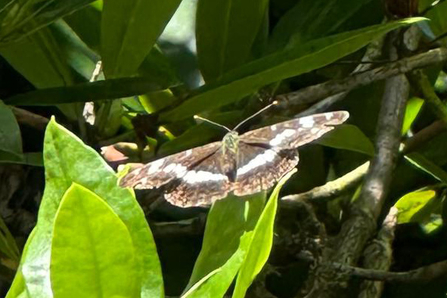
White admiral at Lound Lakes – Andy Hickinbotham
Vivid purple
Bracken control has paid off at Gunton Warren, where there are swathes of gorgeous purple heather in flower. This is thanks to the continued efforts of our wonderful volunteers. The first photo below shows the young heather peeking through thin bracken, whilst the other shows a mature patch amongst the gorse after years of pulling bracken.
High winds
The recent high winds meant the wardens were extra busy with safety checks and path clearance.
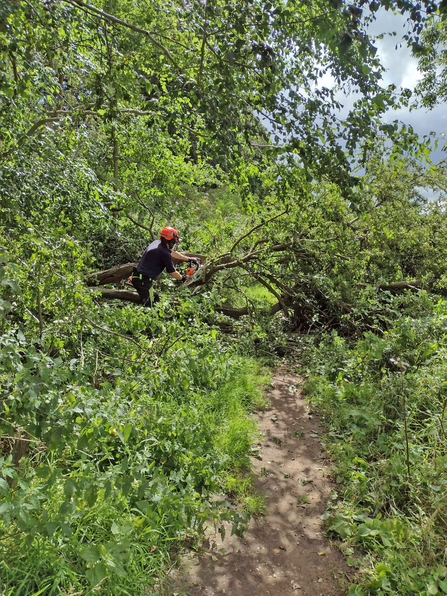
Lewis clearing a fallen tree across a footpath at Oulton Marsh today – Frances Lear
Floristic diversity
Our wonderful team of volunteers helped the Carlton Marshes team cut another section of Sprat’s Water this week. Cutting areas of fen helps maintain a diversity of flora which will in turn attract a variety of insects and birds.
Wildlife guides
Warden Lewis Yates took some of our brilliant volunteer wildlife guides on a tour of the newer marshes on the western edge of Carlton Marshes. This will enable them to pass on a better understanding of the reserve and its exciting wildlife to our visitors.
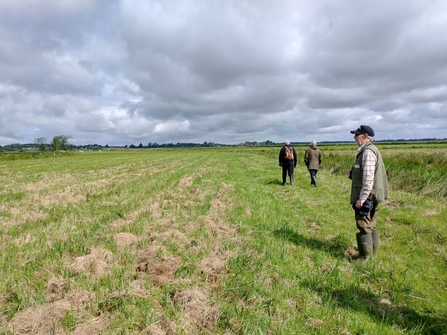
Warden Lewis Yates took some of our brilliant volunteer wildlife guides on a tour of the newer marshes on the western edge of Carlton Marshes
Black tailed godwits
Hundreds of black-tailed godwit were recorded at Trimley Marshes this week. Godwits are sociable birds, forming large flocks when feeding, probing the mud for invertebrate prey.
A tall, elegant wader, the black-tailed godwit breeds in wet grasslands, and winters on coastal estuaries and marshes, and at inland shallow waters. Black-tailed godwits form monogamous pairs that can last for 25 years. Every year, faithful couples will arrive at their breeding grounds within three days of each other, mate and raise their chicks together.


